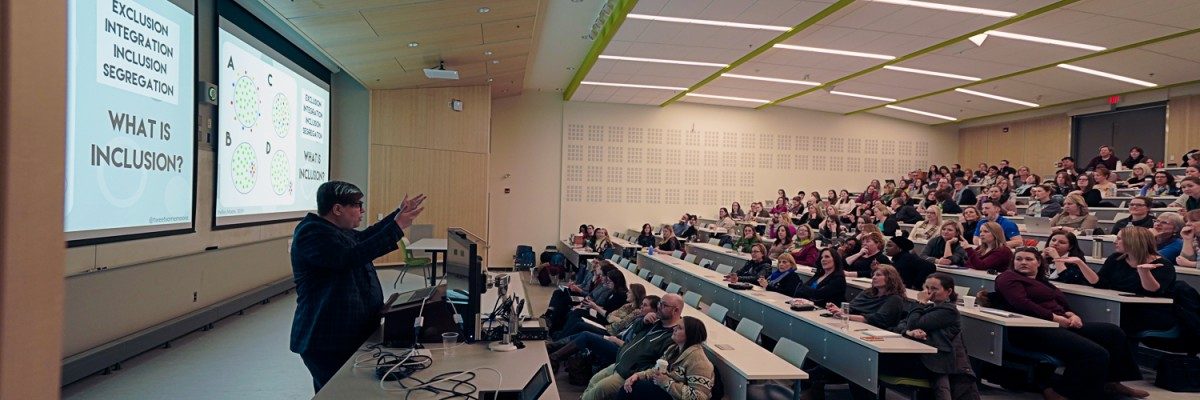
Moore says that inclusion plans must also be easy to implement in order to be effective.
Inclusion about ‘teaching to difference’
Inclusion in classrooms is not only about including people who are different, but moreover about teaching to difference, says Shelley Moore, an educator and speaker on special-needs students.
“You don’t have to change who people are,” Moore said. “It’s really about understanding identities of people and understand that everyone’s diverse, and realize that we need to support teachers to support diversity—rather than just talking about inclusion as a space, and then leaving our teachers to figure it out on their own.”
Moore contends with the common perception among educators that addressing diversity in classrooms adds to teacher workloads.
“I look at it as not more work, but it is different work,” Moore said.
She explained that more work is required if educators try to apply one-size-fits-all, standardized lesson plans. Developing a universal plan up front that accepts that all students are different eliminates the need to make adjustments afterward, she said.
“If we design really well the first time, we don’t have to retrofit afterward.”
Moore cites as an example a Tofino school that includes group work where students choose their own groups and study topics.
“Part of it is helping kids to decide what groups that they are belonging to because … they’re never going to organize themselves by things they can’t do,” Moore said, adding that inclusive lesson plans get students involved and working together. “These are skills that (students) need to learn anyway.”
Moreover, Moore asked the audience gathered at a Faculty of Education lecture hall recently to consider incentives and structural supports that encourage educators to choose inclusion rather than trying to convince more people to attempt inclusion methods.
“How we can help to shift our support models, and help to support teachers to be inclusive, as opposed to supporting individuals in the classroom?” Moore said. “How can we make the choice to be inclusive easier and how do we make that easier for teachers and administrators in school. Just telling them what to do will never work.”






